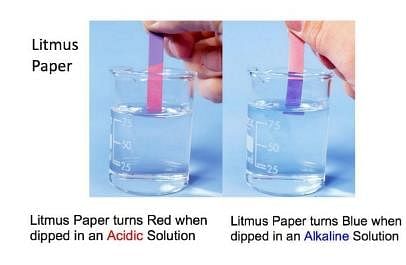UPSC Exam > UPSC Tests > Test: Introduction to Acids & Bases - UPSC MCQ
Test: Introduction to Acids & Bases - UPSC MCQ
Test Description
20 Questions MCQ Test - Test: Introduction to Acids & Bases
Test: Introduction to Acids & Bases for UPSC 2025 is part of UPSC preparation. The Test: Introduction to Acids & Bases questions and answers have been prepared
according to the UPSC exam syllabus.The Test: Introduction to Acids & Bases MCQs are made for UPSC 2025 Exam.
Find important definitions, questions, notes, meanings, examples, exercises, MCQs and online tests for Test: Introduction to Acids & Bases below.
Solutions of Test: Introduction to Acids & Bases questions in English are available as part of our course for UPSC & Test: Introduction to Acids & Bases solutions in
Hindi for UPSC course.
Download more important topics, notes, lectures and mock test series for UPSC Exam by signing up for free. Attempt Test: Introduction to Acids & Bases | 20 questions in 15 minutes | Mock test for UPSC preparation | Free important questions MCQ to study for UPSC Exam | Download free PDF with solutions
Detailed Solution for Test: Introduction to Acids & Bases - Question 1
Test: Introduction to Acids & Bases - Question 2
Which of the following properties is NOT shown by bases?
Detailed Solution for Test: Introduction to Acids & Bases - Question 2
Detailed Solution for Test: Introduction to Acids & Bases - Question 3
Detailed Solution for Test: Introduction to Acids & Bases - Question 4
Detailed Solution for Test: Introduction to Acids & Bases - Question 5
Detailed Solution for Test: Introduction to Acids & Bases - Question 6
Test: Introduction to Acids & Bases - Question 7
The difference of molecules of water in gypsum and PoP is
Detailed Solution for Test: Introduction to Acids & Bases - Question 7
Test: Introduction to Acids & Bases - Question 8
Which of the following is NOT an organic acid?
Detailed Solution for Test: Introduction to Acids & Bases - Question 8
Test: Introduction to Acids & Bases - Question 9
Which one of the following is acidic/slightly acidic?
Detailed Solution for Test: Introduction to Acids & Bases - Question 9
Test: Introduction to Acids & Bases - Question 10
Which of the following acid is present in tamarind?
Detailed Solution for Test: Introduction to Acids & Bases - Question 10
Detailed Solution for Test: Introduction to Acids & Bases - Question 11
Test: Introduction to Acids & Bases - Question 12
Which of the following properties is not shown by acids ?
Detailed Solution for Test: Introduction to Acids & Bases - Question 12
Detailed Solution for Test: Introduction to Acids & Bases - Question 13
Test: Introduction to Acids & Bases - Question 14
A substance ‘A’ does not dissociate completely into its ions in aqueous solutions. It is bitter in taste and soapy to touch.Identify the substance A.
Detailed Solution for Test: Introduction to Acids & Bases - Question 14
Test: Introduction to Acids & Bases - Question 15
Select the substance which shows acidic behavior in its aqueous solution.
Detailed Solution for Test: Introduction to Acids & Bases - Question 15
Detailed Solution for Test: Introduction to Acids & Bases - Question 16
Test: Introduction to Acids & Bases - Question 17
Which one will NOT change red litmus to blue?
Detailed Solution for Test: Introduction to Acids & Bases - Question 17
Detailed Solution for Test: Introduction to Acids & Bases - Question 18
Test: Introduction to Acids & Bases - Question 19
Name an element which is common to all acids?
Detailed Solution for Test: Introduction to Acids & Bases - Question 19
Test: Introduction to Acids & Bases - Question 20
Name an acid which contains both oxygen and hydrogen?
Detailed Solution for Test: Introduction to Acids & Bases - Question 20
Information about Test: Introduction to Acids & Bases Page
In this test you can find the Exam questions for Test: Introduction to Acids & Bases solved & explained in the simplest way possible.
Besides giving Questions and answers for Test: Introduction to Acids & Bases, EduRev gives you an ample number of Online tests for practice
Download as PDF




















